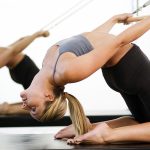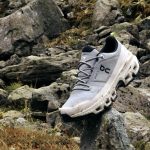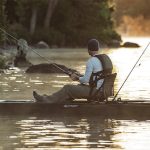Everybody loves a good story. Thankfully, outdoor footwear right now has a lot of them. While messages around comfort, breathability, support, style and sustainability continue to support traditional spring/summer categories, demands for more versatility/multipurpose offerings as well as the burgeoning lightweight/minimalism trend are particularly shining a light on the sandal, trail runner, light hiker and multisport categories. While the recovering economy has certainly played a role, those stories are helping generate excitement on selling floors and leading to improved sales trends across all footwear channels.
The controversy around barefoot running appears to have established a minimalist footwear category but some believe lightweight footwear is the bigger opportunity – one that can be tapped in areas well beyond running. At the same time, with consumers looking for shoes that serve multiple-purposes, hybrids that work as hikers as well as trail runners or even cycling shoes are seeing robust demand. But with the ongoing “casualization” of America, consumers are looking for outdoor styles, particularly in sandals, that are more appropriate for work, dining out and other lifestyle activities. Comfort and durability are key for consumers with many outdoor shoes being worn as everyday gear.
For retailers, one major payback is that consumers are paying up for more functional and appealing shoes. For example, consumers in the past were fine with a $20 flip-flop for a day at the beach. But with sandals becoming more of an everyday shoe, consumers expect an upgrade and it is not uncommon to see sandals retail for $100 and up.
“I think the overall comfort, fit and performance expectations are increasing as sandals are now part of virtually everyone's wardrobe,” said Ahnu President Jim Van Dine. “Consumers are not willing to 'trade down' in terms of these expectations when it comes to sandals, as perhaps they have been in the past. Now they expect the same level of comfort and performance as with their athletic shoes.”
John Connelly, president of Oboz Footwear, is likewise seeing consumers in the multi-sport and hiking categories becoming more “value conscious.”
Consumers are willing to pay a little more for higher quality footwear that promises to be more durable and lasts longer but also can be used for hiking, traveling or every-day use.
“They expect a lot of performance and life out of these shoes,” said Connelly. “We have customers heading out on some serious outings, such as thru hikes on the Continental Divide, in light and mid hikers. So protection and comfort underfoot is key, as are details that help durability…”
Keen CEO James Curleigh believes sandals vendors overall are doing a better job addressing the consumer's demand for “purposeful versatility” across shoe categories. In sandals, for example, women in the past had to choose between style or utility. But newer designs address both. “What we're seeing from a sandal point of view is different brands, including us, pushing the envelope on what is acceptable for casualization,” observes Curleigh. “Everyone knows at the beach, it's a flip flop.
On the trail, it can be a sandal with toe protection. But what's that casual approach that meets that through-the-week and through-the-weekend look? So I think there's some versatility out there that meets the casualization trend better than it has in the past.”
But in addition to addressing appropriate styling for weekday wear, consumers are also looking for sandals that fill many purposes, contends Curleigh. “The reality is the consumer doesn't think as literally as we do about the usage,” said Curleigh. “If someone's packing for a week to go somewhere, they used to take a tennis shoe, a flip flop, a hiking shoe and a dress shoe. But they can now take the Keen Whisper because it fills all those needs.
When I go on a plane and I see someone wearing Keens, I'll ask them, “How do you like your Keens?' And they'll say, 'Oh my God! It's the only shoe I bring now. I used to bring four or five pairs.' So that for us is what 'purposeful versatility' is about.”
Brandan Hill, director of product development at Chaco, sees consumers moving back toward “simpler footwear solutions” as well as healthier ones. He believes this may be partly due to the popularity of minimalism as well as toning shoes. “There's just an awareness of healthier footwear solutions,” said Hill. “You're seeing a more knowledgeable consumer understanding how to take care of their body or take care of their biomechanics.”
Indeed, Juerg Geser, global product director at Teva, believes that with consumers fixated on comfort, basic function and style, technology stories have become somewhat less of a driver in the sandal category.
“The consumer is more interested in 'instant comfort' rather than the technology behind the product,” said Geser. “These days, the consumer expects the technology is there and I believe they are getting a little tired of the overhyped stories that shoe companies try to push. In the end, meaningful technology will always win The consumer is more concerned with feeling of “grippy and sticky” outsoles than paying attention to fancy rubber compound names.”
JP Borod, footwear product director for The North Face, said that the more traditional, webbing-based sandal category is pretty stagnant.
“While that consumer is still out there, the growth opportunity is coming from protective styles with more foot coverage; styles that blur the line between shoe and sandal,” said Borod. “The competitive landscape is fierce, and it's pushing the industry toward some innovative concepts, from both a performance and fashion perspective,” noted Borod. “While the men's consumer seems content with the traditional 3-point sandal design, women have become much less complacent. The basic, 3-point thong design will always be relevant, but I do see the women's marketplace trending toward more compelling strap configurations and mixed material fabrications.”
Mark Mathews, director of summer product development for SCARPA North America, said versatility is also a strong trend in hikers and multisport. SCARPA is seeing particular success with versatile “hybrid” products that perform well in a variety of activities and bridge the gap between trail running and multisport. Overall, Matthews said the hiking market has grown steadily in the last three years at around 20-25%, with the growth coming from fabric/leather boots.
Hi-Tec is finding that consumers are looking for more low-top options in light hikers that can be also used as trail runners, according to Dayna Panales, Hi-Tec's U.S. PR manager.
Meanwhile, minimalism/lightweight continues to be a hot movement around the trail running category. “The conversation has fully transitioned to light, fast, nimble, low-profile,” said Donna Williams, Montrail's sales manager. “Montrail has made impact with the Mountain Masochist and other styles that meet this demand. We expect this “trend” or category to continue and grow and we are approaching product development with this perspective.”
Montrail, GoLite and Saucony, as well as Vibram, are among those updating their minimalist offerings. New Balance is entering into the category with its Minimus. Merrell is introducing what it believes to be the first barefoot outdoor collection. Keen is coming out with a minimalist trail running shoe, called the A 86 for Agent 86 of Maxwell Smart fame. Brooks' eco-friendly Cascadia 6 trail runner is one ounce lighter than its predecessor.
“The ability to feel the trail in all its dusty, rocky glory enriches the experience,” said Rachelle Kuramoto, co-founder of the eco-friendly minimalist Kigo footwear line. “There are 7200 nerve endings in the foot, and minimalist construction makes the wearer so much more able to engage them in the hiking or trail running experience.
Add to that, the flexibility and lack of weight makes the hiker or runner more nimble than if they were wearing a heavy boot or shoe. This is a hearkening back to childhood the feeling of running or scrambling around the woods or on rocks is liberating, and minimalist shoes just add to that sense of freedom.”
Patrick O'Malley, SVP of global product, Saucony, said the true retail opportunity could be add-on sales. “What we're seeing is consumers finding a nice benefit to wearing a shoe like the Kinvara four days a week and their traditional shoes on the other days,” said O'Malley. “If you think of the activity of running, it's the same motion over and over again and if there's even just a slight inefficiency, all that repetition can lead to injuries. So a minimalist shoe may reduce the amount of that impact over time while also allowing you to build strength in all those different muscles and joints in the foot.”
But while the industry appears to agree that “less is more” message appears to be an enduring trend, the debate continues on how minimal a shoe can become. Some believe only certain body types can handle extreme barefoot styles. A rash of injuries have also been occurring as people rush the transition from neutral shoes to more minimalist styles. “There is a lot of buzz in the barefoot movement but that does not really apply to everyone and it does not help sell shoes,” said Jonathan Lantz, president of La Sportiva N.A. “Shoes that allow the foot to flex naturally and assume a great deal of the structure of the shoe are very popular. New cushioning systems and lighter mesh uppers are very popular.”
Other technology stories hitting the OR show are coming from Montrail, which will be introducing its FluidPost pronation control technology. Vasque's Scree collection features a Stealth Rubber outsole that promises to be the stickiest rubber compound available. Garmont is unveiling the Amica Collection, its first technical footwear assortment designed by and for women.














